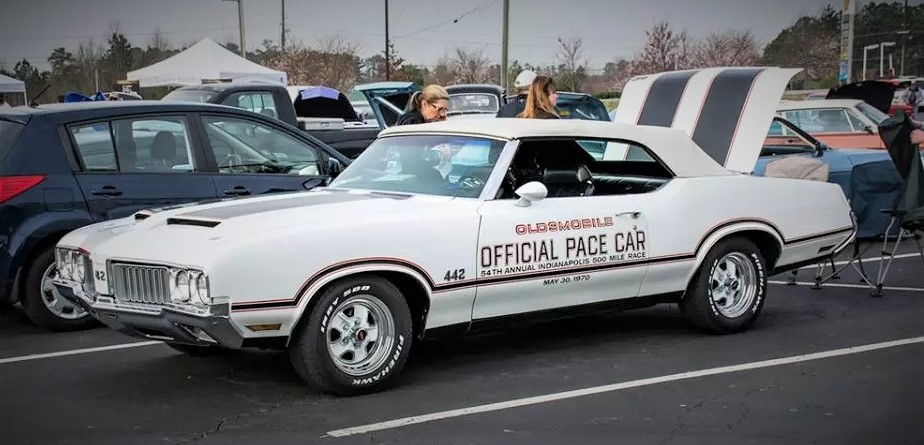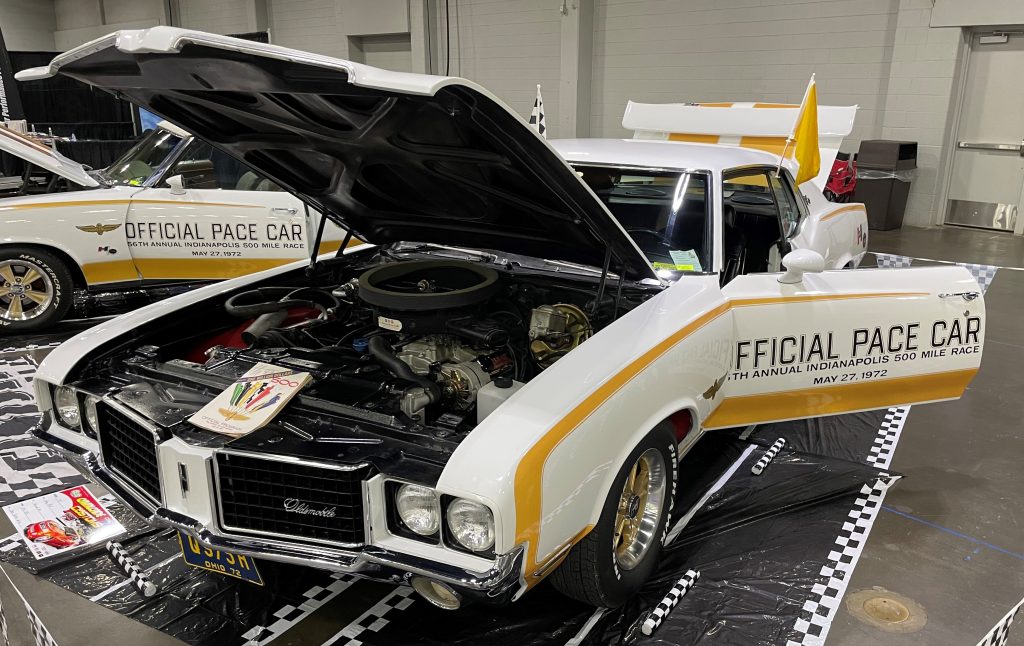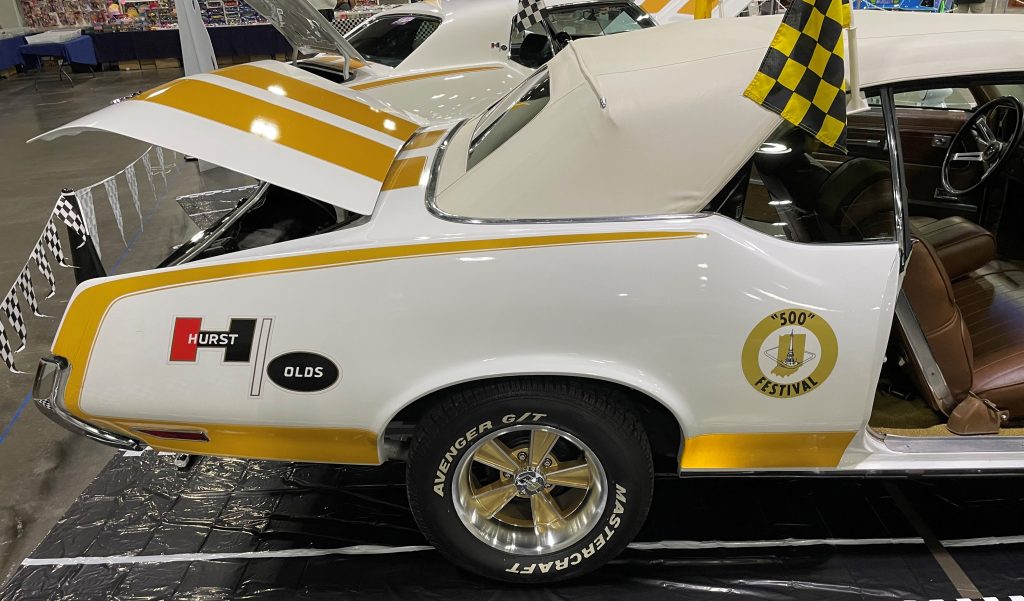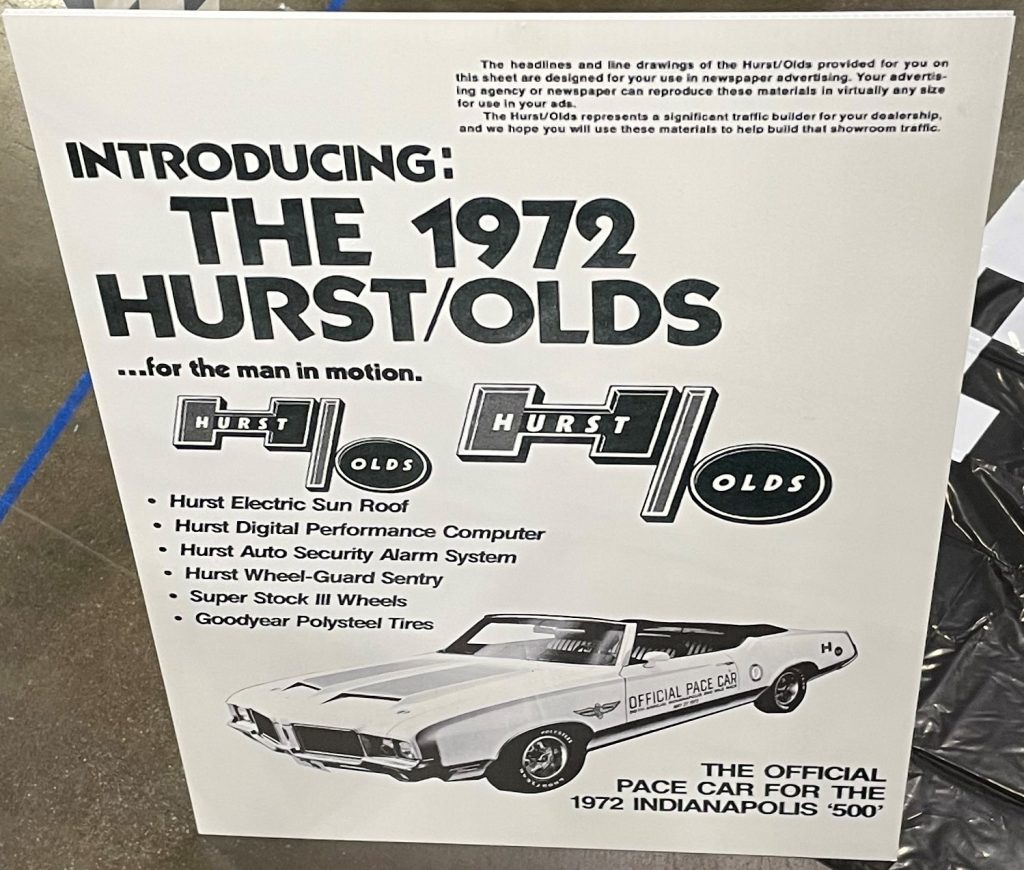Starting with an 88 coupe in 1949, Oldsmobile has a solid history in supplying pace cars for the legendary Indianapolis 500 race.

That history grew in 1970, when an Oldsmobile 442 driven by racer Roger Ward carried Astronaut Pete Conrad and then-owner of the Indianapolis Motor Speedway Tony Hulman around the track.
But after the disastrous crash of the 1971 Dodge Challenger pace car the following year, GM and the rest of Detroit’s Big Three shied away from offering any of their cars for the 1972 race.

Undaunted, Hurst Performance jumped in with its specially-prepped Hurst/Olds models.
Though derived from an Oldsmobile Cutlass, technically speaking, the Hurst/Olds came from Hurst Performance, not GM. So the 1972 Hurst/Olds bears the distinction of being the only time a pace car has been offered by a company other than an automobile manufacturer.
That also means the 1972 Hurst/Olds Indy 500 Pace Car replicas are extraordinarily rare, with just over 600 editions hitting showrooms. Of that 600ish, Hurst/Olds made 130 ragtops, 279 hardtops, and 220 coupes equipped with a fancy electric sunroof. (Hurst/Olds also specially prepped a handful of Indy 500 wagons too!)

Suffice it to say, finding a single 1972 Hurst/Olds Indianapolis 500 Pace Car is quite a feat.
So when we came across not one, but two—a coupe AND convertible—1972 Hurst/Olds Indy 500 Pace Car replicas at a Cincinnati Cavalcade of Customs show, our heads dang-near exploded.

And the pace car editions were more than sticker-and-stripe packages too.
Every 1972 Hurst/Olds Indy 500 Pace Car Replica came in the same white/gold livery, and they all got the special Ram Air hood plucked from the Oldsmobile W-25 package. All the cars were also fitted with gold-painted Olds Super Stock III wheels (with Hurst “Wheel-Guard” security) wrapped in Goodyear Polysteel tires.
There was an available onboard vehicle security system too.

As far as performance, the cars came in two basic flavors.
Buyers could opt for the W-45 Hurst/Olds package that came with the Oldsmobile 455ci L75 engine good for 250 horsepower, or you could step up to the W-30 kit and its L77 455 powerplant making 300 hp.
Either engine was mated exclusively to a GM TH400 automatic—with a Hurst Dual Gate shifter, of course.

And 1972 didn’t mark the end for Hurst or Oldsmobile at Indianapolis, either. Hurst/Olds came back in 1974 with another special edition Indy 500 Pace Car. Then in 1978 Oldsmobile itself officially reentered the Indy 500 pace car scene with a Delta 88.
With a mix of Cutlasses, Auroras—and even (gasp!) a Bravada—Oldsmobile would go on to handle pace car duties six more times before the marque was shuttered by GM in 2004.
If you’re into pace car replicas, you may enjoy this article too: The 1979 Ford Mustang Indy 500 Pace Car Heralded the Arrival of the Legendary Foxbody



Comments